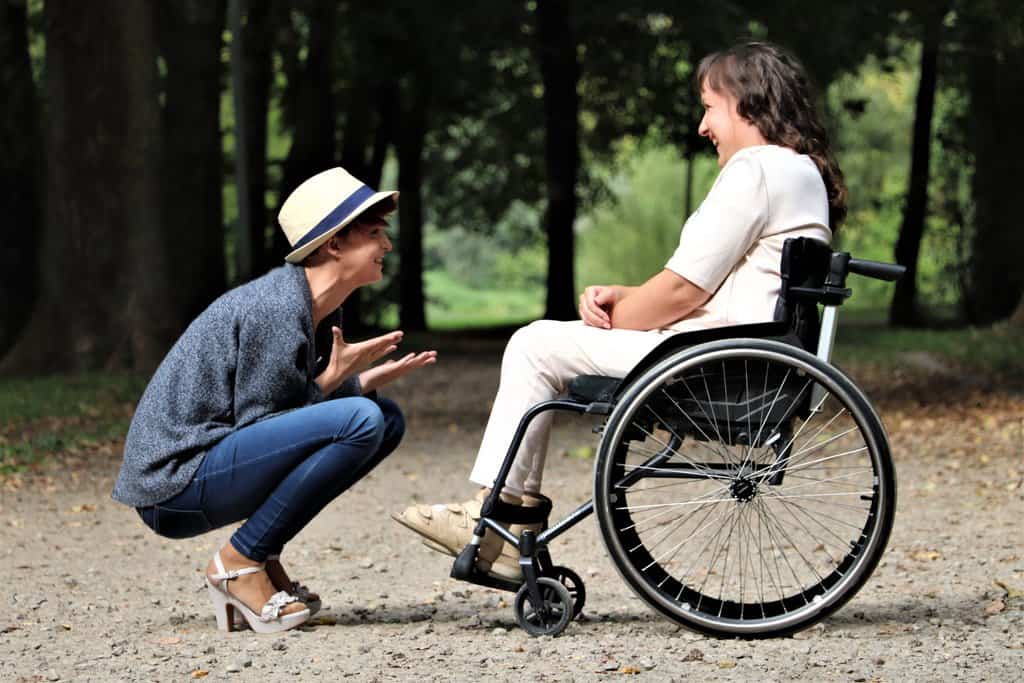Disability aids, or assistive devices or mobility aids, are tools or equipment designed to assist individuals with disabilities in performing daily activities, enhancing their mobility, and promoting independence.

These aids are created to address a wide range of physical, sensory, and cognitive impairments. Disability aids include wheelchairs, scooters, canes, walkers, crutches, hearing aids, communication devices, and adaptive equipment for personal care.
These aids play a crucial role in improving the quality of life for people with disabilities by providing increased mobility, accessibility, and assistance with tasks that may otherwise be challenging or impossible to perform independently.
They help individuals maintain their independence, engage in social activities, access education, and employment opportunities, and navigate their environment more quickly and confidently.
By reducing barriers and promoting inclusivity, disability aids empower individuals to live more fulfilling and meaningful lives.
Buying from an established mobility and disability aids supplier is a wise decision for several reasons:
- Stores have a proven track record of providing high-quality products that meet industry standards and regulations. This ensures that you are purchasing aids that are safe, durable, and reliable.
- Suppliers often offer various options, allowing you to choose from multiple mobility aids that best suit your needs and preferences.
- They typically have knowledgeable and trained staff who can provide expert guidance and assistance in selecting the proper aid.
- Shops often offer after-sales services, including warranties, repairs, and maintenance, ensuring that you receive ongoing support and peace of mind.
- Buying from a reputable supplier gives you confidence in your purchase. It helps establish a long-term relationship, ensuring you can rely on their expertise for future mobility aid requirements.
Regarding training with mobility aids, several tips can help individuals maximise their effectiveness and safety. Here are some helpful training tips:

Seek professional guidance
Consult a healthcare professional, such as a physical or occupational therapist, who can assess your needs and provide personalised training recommendations.
They can guide you on the appropriate use of mobility aids and teach you techniques for safe and efficient movement.
Proper fitting and adjustment
Ensure that your mobility aid, such as a cane, walker, or wheelchair, fits your height and body proportions properly.
Improper fit can lead to discomfort and inefficient use of the aid. Consult with a healthcare professional or a mobility aid specialist to ensure correct adjustments.
Start with basic movements
If you’re new to using a mobility aid, begin by practising basic movements in a safe and controlled environment.
This may include walking with a cane or using a walker to maintain balance and stability. Gradually progress to more complex movements and terrains as you gain confidence and strength.
Focus on posture and body mechanics
- Pay attention to your posture while using a mobility aid.
- Maintain an upright position with your shoulders relaxed and your head held high.
- Engage your core muscles to provide stability and support.
Proper body mechanics can help reduce strain on your joints and prevent injuries.
Practice weight shifting and balance exercises
Mobility aids often require weight shifting and balance adjustments.
Incorporate exercises focusing on weight shiftings, such as standing on one leg or side-stepping, to improve your balance and coordination.
These exercises can help you adapt to using the aid effectively.
Strengthen supporting muscles
Strengthening exercises targeting the muscles involved in mobility can enhance your overall stability and functional ability.
Consult a healthcare professional or a physical therapist to develop an exercise routine that suits your needs and abilities.
Take it slow and steady
Give yourself time to adapt and build confidence with your mobility aid.
Begin with short practice sessions and gradually increase the duration and intensity of your training.
Pushing yourself too hard too soon can lead to fatigue and potential injury.
Practice in different environments
Once you feel comfortable with your mobility aid, practice using it in various settings and terrains.
This includes navigating slopes, stairs, uneven surfaces, and crowded areas.
Each environment presents unique challenges, and practising in different scenarios will improve your overall mobility skills.
Maintain a positive mindset
Adjusting to a mobility aid can be challenging both physically and emotionally.
Stay positive and patient with yourself throughout the training process.
Celebrate your progress and focus on your abilities rather than your limitations.
Summary
Remember, the tips provided here are general guidelines, and working closely with healthcare professionals who can provide personalised advice based on your specific needs and circumstances is essential.
Ryan is a professional copywriter from Ryan’s Copywriting. He has a passion for sharing valuable information.
